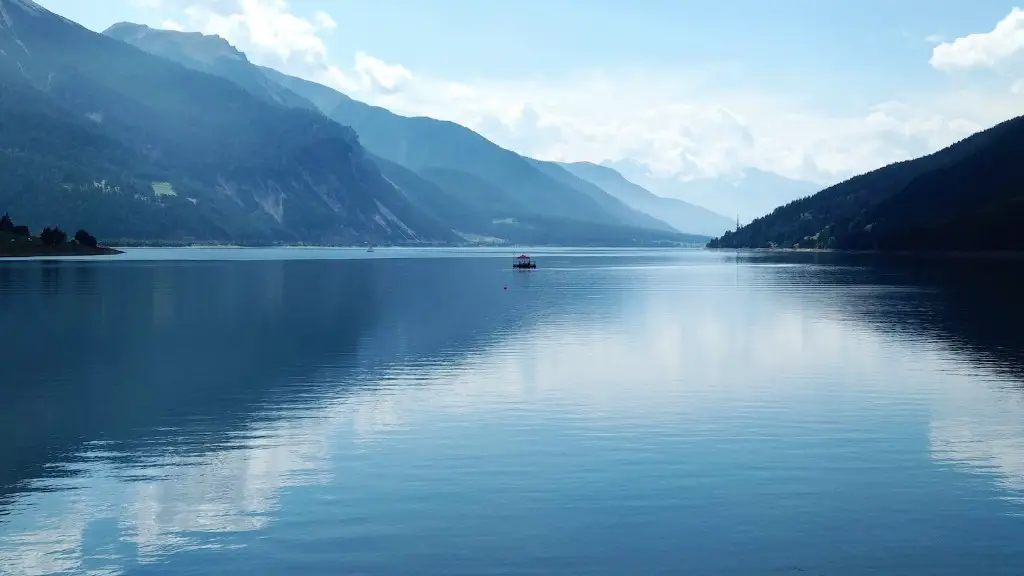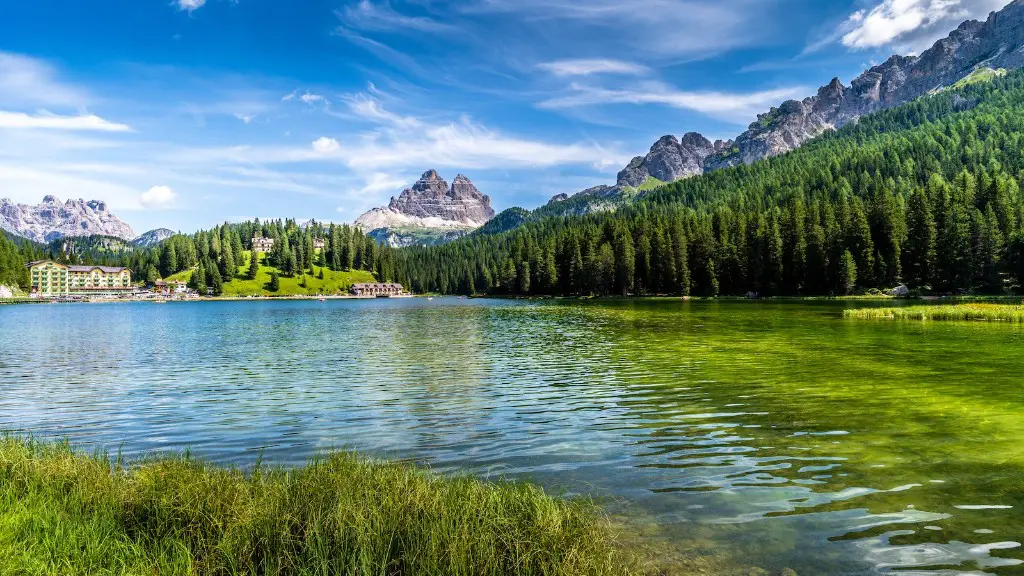Does Lake Michigan Have Blue Green Algae?
The short answer to this question is yes, Lake Michigan does have blue-green algae. This type of algae can be found in various locations, including rivers, lakes, and ponds. Blue-green algae, or cyanobacteria, is an organism that can live in both aquatic and terrestrial environments. Lake Michigan is no exception – and recent research suggests that the lake is experiencing an increase in cyanobacterial blooms, which could potentially cause a variety of health and environmental issues if not properly addressed.
Blue-green algae is typically found at the surface of the lake, where it takes advantage of the available sunlight. This type of algae is unique in that it is able to produce its own food through photosynthesis. It is also capable of reproducing very quickly, forming colonies, or “blooms” as they are commonly known.
Though blue-green algae can be beneficial in small amounts, it can become a potential hazard when there is an overabundance – in some cases, these blooms can become so large that they can form a visible scum on the water’s surface. This abundance can cause a number of issues for both the environment and anyone who comes into contact with the water. For example, cyanobacteria produces toxins that can cause skin irritation in humans and animals, as well as respiratory issues if inhaled.
To address the potential increase in blue-green algae blooms, researchers in the Great Lakes region have been studying Lake Michigan’s ecology in an effort to better understand the causes of these blooms. It is believed that increased nutrients in the lake, combined with rising temperatures, could be contributing to the increase in cyanobacterial blooms. Other factors, including agricultural runoff and sewage, may also be potential contributors.
Analyzing The Effect of Change In Pollution Levels On The Concentration Of Algae In Lake Michigan
Researchers in the Great Lakes region have also been examining the effect of pollution on the blue-green algae concentration in Lake Michigan. Over the past decade, the water quality of the lake has been steadily improving, largely due to better waste management and improved regulation. This has had a positive effect on the pollution levels in the lake, which, in turn, has had an effect on the concentration of blue-green algae in Lake Michigan.
According to recent studies, the improved water quality has been effective in decreasing the amount of blue-green algae in the lake. The decrease has been most noticeable during the summer months, when the blooms of cyanobacteria typically peak. In 2017, researchers recorded the lowest summer algae bloom concentrations since annual monitoring started in 1977.
However, despite the reduction in blue-green algae concentrations, the number of blooms has remained consistently high. This indicates that other factors, such as increased levels of nutrients and rising temperatures, are still contributing to the algae blooms in Lake Michigan. In order to effectively address this issue, researchers are looking for ways to further reduce nutrient levels in the lake.
How Nutrient Pollution Contributes To Blue Green Algae Blooms
Nutrient pollution is one of the primary causes of blue-green algae blooms in Lake Michigan. Nutrient pollution is caused by excessive amounts of nitrogen and phosphorous entering the lake, primarily from agricultural runoff and sewage. These nutrients act as a fertilizer for the algae, allowing it to reproduce quickly and form these large blooms.
In order to reduce the amount of nutrient pollution, researchers suggest a number of different measures that can be taken. For example, farmers can reduce the amount of runoff from their fields by using cover crops and no-till practices. Additionally, municipalities can implement tougher regulations on sewage treatment plants to reduce the amount of nutrients entering the lake.
The decrease in nutrient pollution can have a significant effect on the amount of blue-green algae in the lake. By reducing the amount of nutrients entering the lake, it is possible to reduce the number of blooms and the size of the blooms. In addition, it can also reduce the potential health hazards posed by the algae, as it would no longer be able to produce as many toxins.
The Role Of Climate Change In Lake Michigan’s Algae Problems
Climate change is another factor that is contributing to the blue-green algae blooms in Lake Michigan. As temperatures rise, the lake becomes warmer and more hospitable to the algae. This can lead to an increase in the number and size of blooms, which can, in turn, lead to a number of associated health and environmental hazards.
In order to reduce the effect of climate change on the algae blooms in Lake Michigan, researchers suggest a number of steps that can be taken. For example, reducing greenhouse gas emissions can help to reduce the temperature of the lake, which can have a positive effect on the algae blooms. Additionally, increasing the amount of shade cover around the lake can also help to reduce the amount of sunlight available to the algae.
Strategies To Minimize The Presence Of Algae In Lake Michigan
In order to effectively reduce the amount of blue-green algae in Lake Michigan, it is important for both local and state authorities to take a proactive approach. This can include implementing regulations to reduce nutrient pollution from agricultural runoff and sewage. Additionally, increasing the amount of shade cover around the lake, and reducing greenhouse gas emissions, can also help to reduce the number and size of blooms.
Local authorities can also take steps to reduce the amount of blue-green algae in the lake by educating the public. This can include providing information on the potential health and environmental hazards posed by the algae blooms and encouraging people to take steps to reduce nutrient pollution, such as using cover crops and no-till practices.
Methods For Controlling The Algae Blooms In Lake Michigan
Though blue-green algae blooms are a natural phenomenon, they can become a hazard if they become too abundant. This can cause a number of issues, including health and environmental hazards. In order to reduce the amount of blue-green algae in Lake Michigan, local and state authorities are looking for ways to control the blooms.
One method for controlling blue-green algae blooms is by introducing algae-eating fish into the lake. These fish, such as carp and catfish, feed on the algae, reducing its concentration in the lake. This is a relatively inexpensive and efficient method for managing the blooms, as the fish don’t need to be fed – they simply feed on the algae naturally.
Another method of controlling the blooms is by manipulating the lake’s water quality. This can include adding oxygen to the lake, which can help to reduce the number of blooms. Additionally, flushing the lake on a regular basis can also reduce the number and size of the blooms. Finally, installing aerators and diffusers can also be effective in controlling the blooms.
Making People Aware Of The Hazards Of Algae In Lake Michigan
Though reducing the amount of blue-green algae in Lake Michigan is an important step in ensuring the health of the lake, it is also important to make people aware of the hazards posed by the algae blooms. Educating the public on the potential health and environmental hazards posed by the algae can help to ensure that the public takes steps to reduce nutrient pollution, such as using cover crops and no-till practices. In addition, people should also be aware of the potential dangers posed by contact with the water, such as skin irritation and respiratory issues.
Providing this information to the public can help to ensure that people are more aware of the potential hazards of blue-green algae, as well as the steps that can be taken to reduce the number of blooms in Lake Michigan. This can lead to a healthier and safer lake, as well as a healthier and safer environment for the people who live in the region.

